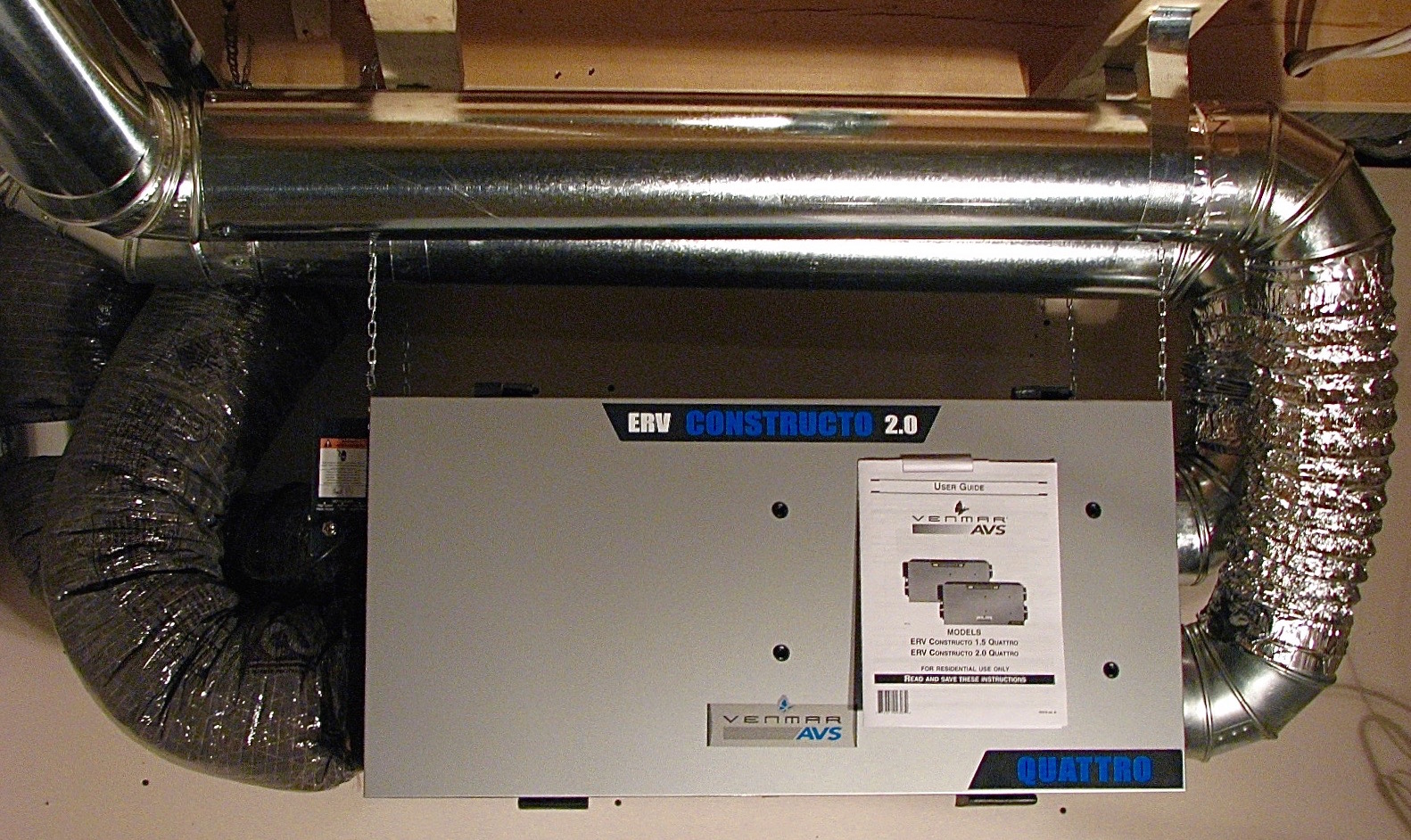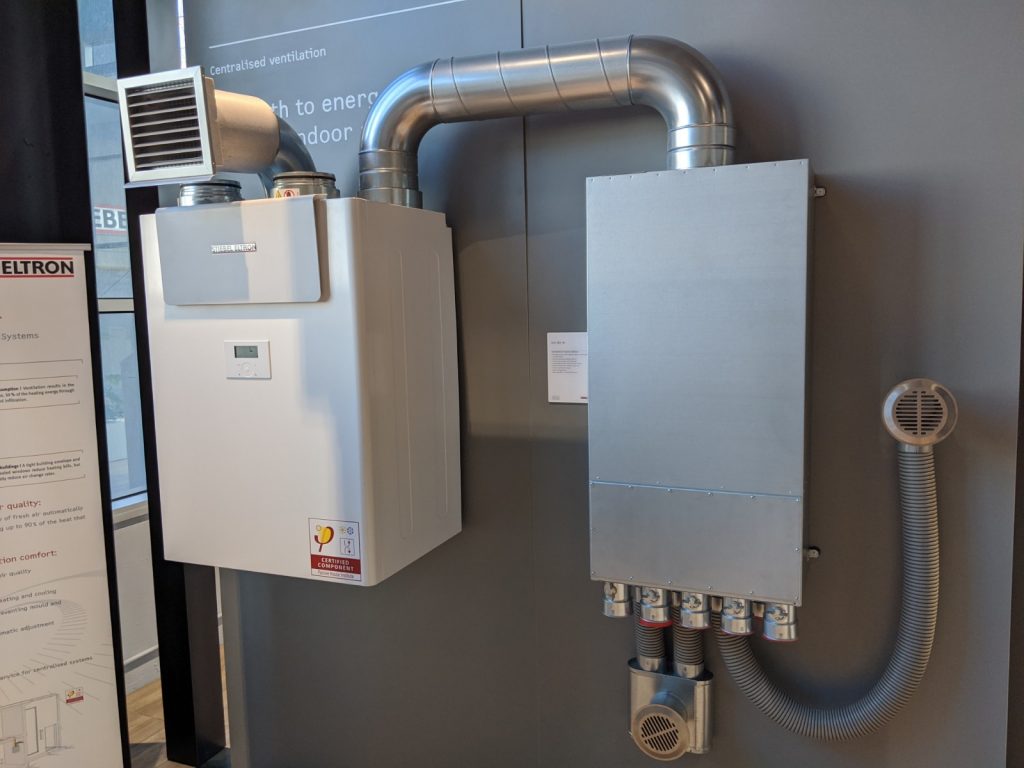Top Strategies to Maintain Your HRV Unit
Unveiling the Trick Benefits and Uses of Heat Recovery Ventilation in Lasting Layout
Heat Recovery Ventilation (HRV) systems play a vital function in sustainable design. They promote a constant exchange of stagnant indoor air with fresh outside air, significantly improving interior air high quality. HRVs contribute to power efficiency by recovering heat from tired air, which can lower utility prices. Recognizing the complex advantages and applications of HRVs discloses their importance in modern design. What other benefits do these systems supply in the pursuit of sustainability?
Recognizing Heat Recovery Ventilation Systems
Heat recovery ventilation (HRV) systems are created to boost indoor air high quality while decreasing energy loss. These systems make use of a mechanical air flow method to exchange stagnant interior air with fresh outdoor air, ensuring a continual supply of tidy air. By catching warm from the exhaust air, HRVs precondition incoming air, decreasing the demand on heating and cooling systems. This process not just enhances thermal convenience however likewise adds to power performance in household and industrial structures. Additionally, HRV systems assist control moisture levels and minimize indoor pollutants, promoting a healthier living atmosphere. Their calculated execution is necessary for achieving sustainable design goals, as they provide an equilibrium in between power preservation and resident well-being.
Just How HRV Equipment Job
While several might be acquainted with ventilation systems, comprehending just how heat healing air flow (HRV) systems run is crucial for appreciating their advantages. HRV systems operate by exchanging stale interior air with fresh exterior air while moving warmth in between the 2 streams. This process takes place in a heat exchanger, where heat from the outward bound air warms the incoming air throughout chillier months, reducing energy loss. Conversely, in warmer months, the system can cool down incoming air making use of the cooler outgoing air. HRVs are outfitted with fans to assist in air flow and filters to eliminate particulates, making certain a constant, well balanced ventilation procedure. This ingenious design not only boosts power effectiveness however likewise adds to keeping a comfortable interior atmosphere.
Enhancing Indoor Air Quality
Interior air top quality can greatly impact health and wellness and health, making efficient ventilation essential in modern homes. Heat Recovery Ventilation (HRV) systems play a vital role in keeping indoor air top quality by continuously exchanging stagnant indoor air with fresh exterior air. This procedure not only decreases air-borne contaminants yet additionally reduces moisture degrees, which can lead to mold and mildew development and respiratory problems. HRV systems filter incoming air, eliminating allergens and particulates, thereby offering a much healthier living atmosphere. In addition, these systems aid get rid of odors and unpredictable organic compounds (VOCs) frequently found in household items. By guaranteeing a consistent circulation of clean air, HRV systems add to a total enhanced interior ambience, promoting comfort and wellness for residents.
Power Efficiency and Cost Financial Savings
Energy efficiency stands apart as a considerable advantage of Heat Recovery Ventilation (HRV) systems. By catching and reusing the warm from tired indoor air, HRVs decrease the power needed for heating incoming fresh air, causing decreased power consumption. This efficiency translates into reduced utility bills, providing substantial expense financial savings for property owners and organizations alike. Additionally, HRV systems typically get power performance rewards and refunds, additionally improving their monetary appeal. With time, the preliminary financial investment in HRV modern technology can bring about a desirable return on financial investment with reduced power costs. As a result, the combination of HRV systems not just advertises lasting style but likewise gives a sensible solution for achieving long-lasting power cost savings and economic advantages.
Ecological Advantages of HRV

A plethora of ecological benefits occurs from the implementation of Heat Recovery Ventilation (HRV) systems. By effectively transferring warmth from exhaust air to inbound fresh air, HRVs considerably minimize the energy required for home heating and cooling rooms. This power performance translates to lower greenhouse gas exhausts, adding to a decline in the total carbon footprint of buildings. Additionally, HRV systems improve interior air high quality by continuously flowing fresh air, consequently minimizing the concentration of indoor contaminants and allergens. The reduction in power consumption help in saving all-natural resources, making HRVs an essential part of sustainable style. Overall, the ecological benefits of HRVs play a crucial role in promoting a much healthier planet and promoting environment-friendly structure techniques.
Versatile Applications in Modern Architecture
Heat recovery ventilation (HRV) systems are significantly being integrated into both household and industrial building tasks. In household settings, HRVs enhance interior air quality while optimizing energy effectiveness. At the same time, in business areas, these systems optimize ventilation techniques, showing their convenience in modern architectural applications.
Residential Projects Integration
While modern style increasingly highlights sustainability, the integration of heat recuperation air flow systems in residential jobs has actually arised as a functional solution for boosting indoor air top quality and power performance. These systems effectively transfer heat from exhaust air to inbound fresh air, minimizing power loss and lowering home heating or cooling down needs. In brand-new builds and retrofits alike, warmth recuperation air flow can be flawlessly included, giving homeowners with a healthier living environment while lowering utility costs. Additionally, with enhancing awareness of environmental influences, even more engineers and contractors are recognizing the lasting advantages of these systems. As a result, warm recovery ventilation has actually come to be a crucial element of sustainable domestic design, showcasing versatility and dedication to green techniques.
Business Areas Optimization
As modern business areas evolve to fulfill the demands of sustainability and efficiency, the application of warm recovery air flow systems becomes a vital method for optimizing interior atmospheres. These systems help with the exchange of stale interior air with fresh exterior air while recovering heat, substantially decreasing power intake. This not only boosts comfort for passengers however likewise helps in reducing functional expenses. Flexible applications can be observed in offices, retail areas, and instructional establishments, where air high quality and temperature level control try this website are extremely important. In addition, incorporating heat healing air flow straightens with green structure certifications, better advertising environmental obligation. Eventually, embracing such systems in industrial architecture not just contributes to sustainability objectives yet also fosters healthier, a lot more productive rooms for customers.
Incorporating HRV Into Sustainable Design Practices
Integrating warm healing ventilation (HRV) systems into sustainable layout techniques offers considerable advantages in power efficiency and indoor air high quality. By making use of HRV, developers can produce cost-efficient remedies that not just minimize energy usage but also boost the general comfort of indoor environments. This placement with sustainability objectives settings HRV as an important element in modern architectural techniques.
Power Effectiveness Improvement
By incorporating heat recuperation air flow (HRV) systems right into sustainable layout techniques, designers and home builders can significantly enhance power efficiency in modern-day buildings. HRV systems operate by catching heat from outbound stagnant air and transferring it to inbound fresh air, lessening the energy required for home heating or cooling interior spaces. This procedure not just lowers reliance on conventional heating and cooling systems yet also lowers overall power usage. Additionally, HRV systems can aid preserve a consistent indoor temperature level, reducing peak power demands. By incorporating these systems, structures can accomplish substantial reductions in energy expenses and carbon impacts, aligning with sustainability objectives. Ultimately, HRV innovation represents a functional solution for improving power efficiency in the developed setting, promoting more accountable resource usage.
Indoor Air High Quality Enhancement
Just look at this now how can warmth healing ventilation (HRV) systems add to superior interior air top quality in modern-day structures? HRV systems efficiently exchange stale interior air with fresh exterior air while recuperating warmth energy, minimizing temperature changes. This procedure decreases the concentration of interior toxins, such as volatile organic substances (VOCs), irritants, and moisture, which can deteriorate air quality and impact passenger health and wellness. By keeping perfect humidity levels and making sure a continual supply of tidy air, HRVs help produce a healthier indoor atmosphere. Additionally, these systems can be incorporated right into lasting style methods, advertising power performance along with boosted air top quality. HRV Heat Recovery Ventilation. Subsequently, HRV modern technology plays a vital role beforehand total occupant convenience and health in modern building styles
Cost-Effective Layout Solutions

Frequently Asked Inquiries
What Upkeep Is Required for Heat Recovery Ventilation Equipments?

Upkeep for warmth recuperation ventilation systems commonly entails normal filter substitutes, cleansing of warmth exchangers, evaluation of followers and Source ducts, and making certain appropriate water drainage. These tasks aid maintain performance and prolong the system's life expectancy with time.
Can HRV Equipments Be Installed in Existing Structures?
Heat recovery ventilation systems can indeed be set up in existing structures. HRV Heat Recovery Ventilation. Retrofitting calls for mindful planning and evaluation of the structure's layout, guaranteeing compatibility with present systems while optimizing energy efficiency and indoor air high quality
Exactly How Do HRV Equipment Impact Noise Levels Inside?
HRV systems can affect interior noise levels by introducing noise from outside resources with ventilation. Top quality installations commonly integrate sound-dampening attributes, reducing noise effect while supplying reliable air exchange and maintaining convenience inside your home.
Are There Any Type Of Downsides to Utilizing HRV Solutions?
The drawbacks of utilizing HRV systems consist of potential high preliminary prices, upkeep obstacles, and the possibility of minimized interior air high quality if filters are sporadically altered, which might result in concerns with humidity degrees.
Exactly how Do I Select the Right HRV System for My Needs?
Choosing the best heat recovery ventilation system entails examining particular needs, such as developing size, climate, and power efficiency goals. Additionally, assessing system features, installment needs, and maintenance considerations is crucial for peak efficiency and fulfillment.